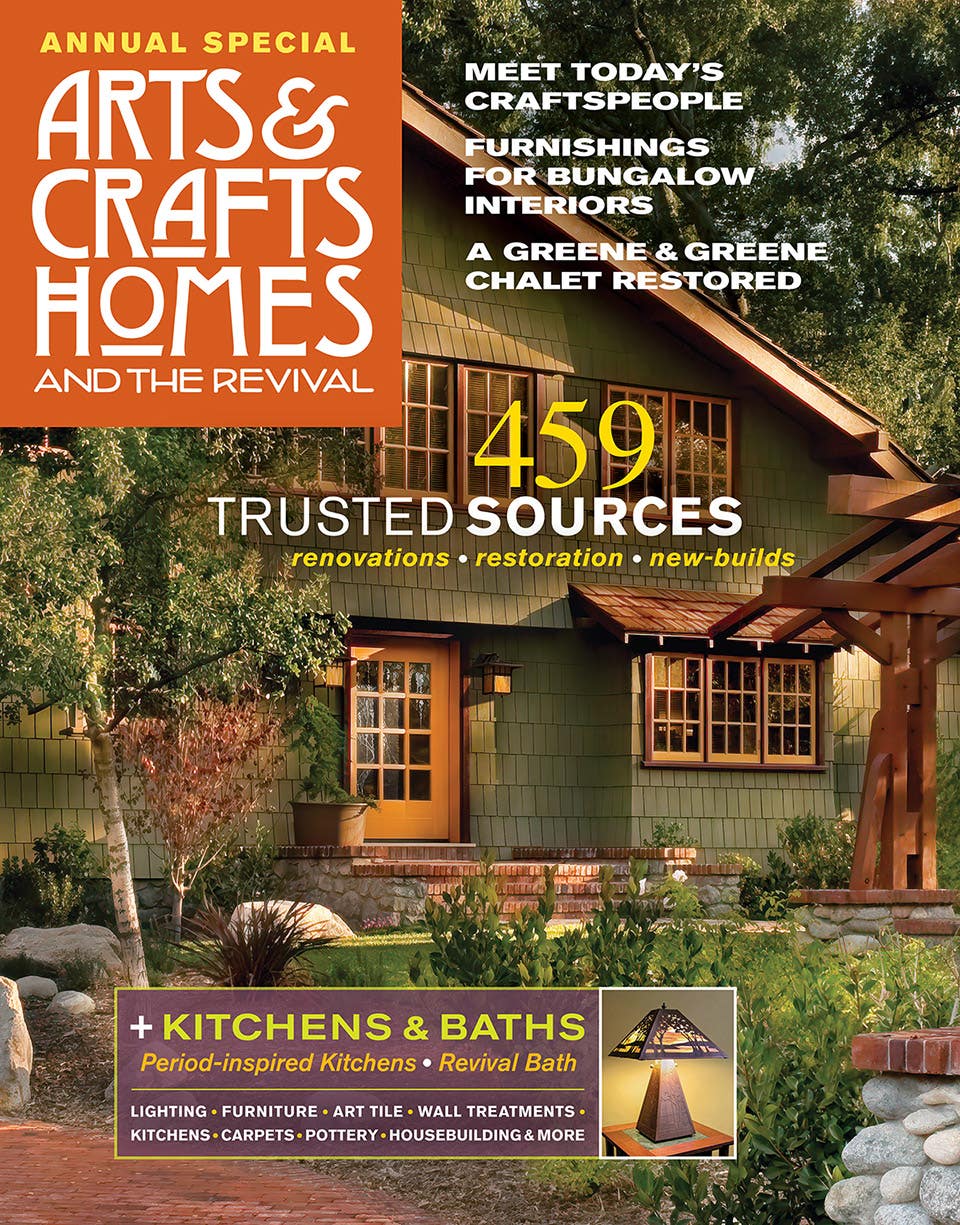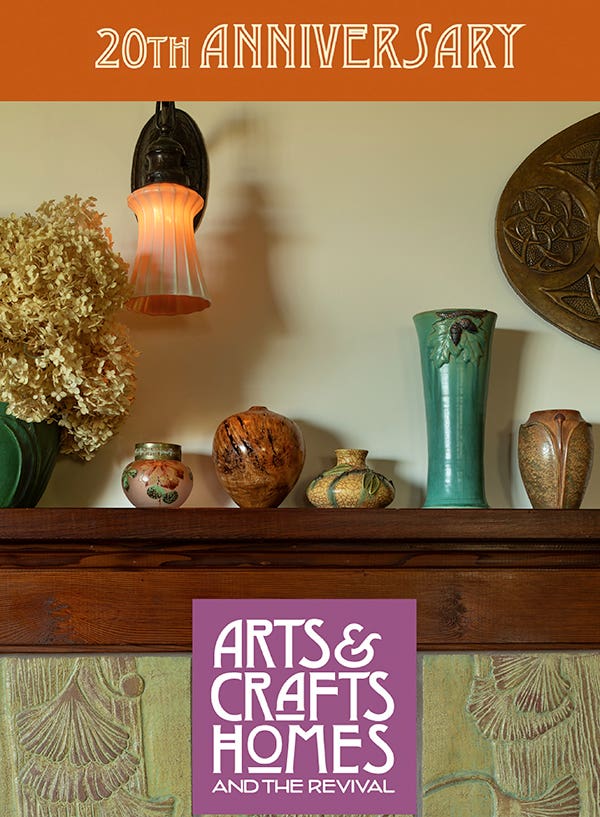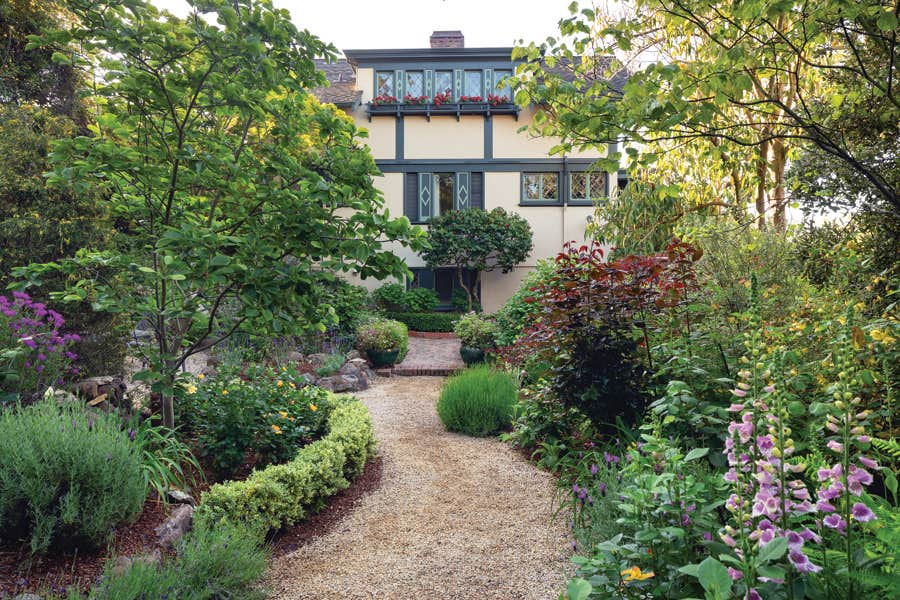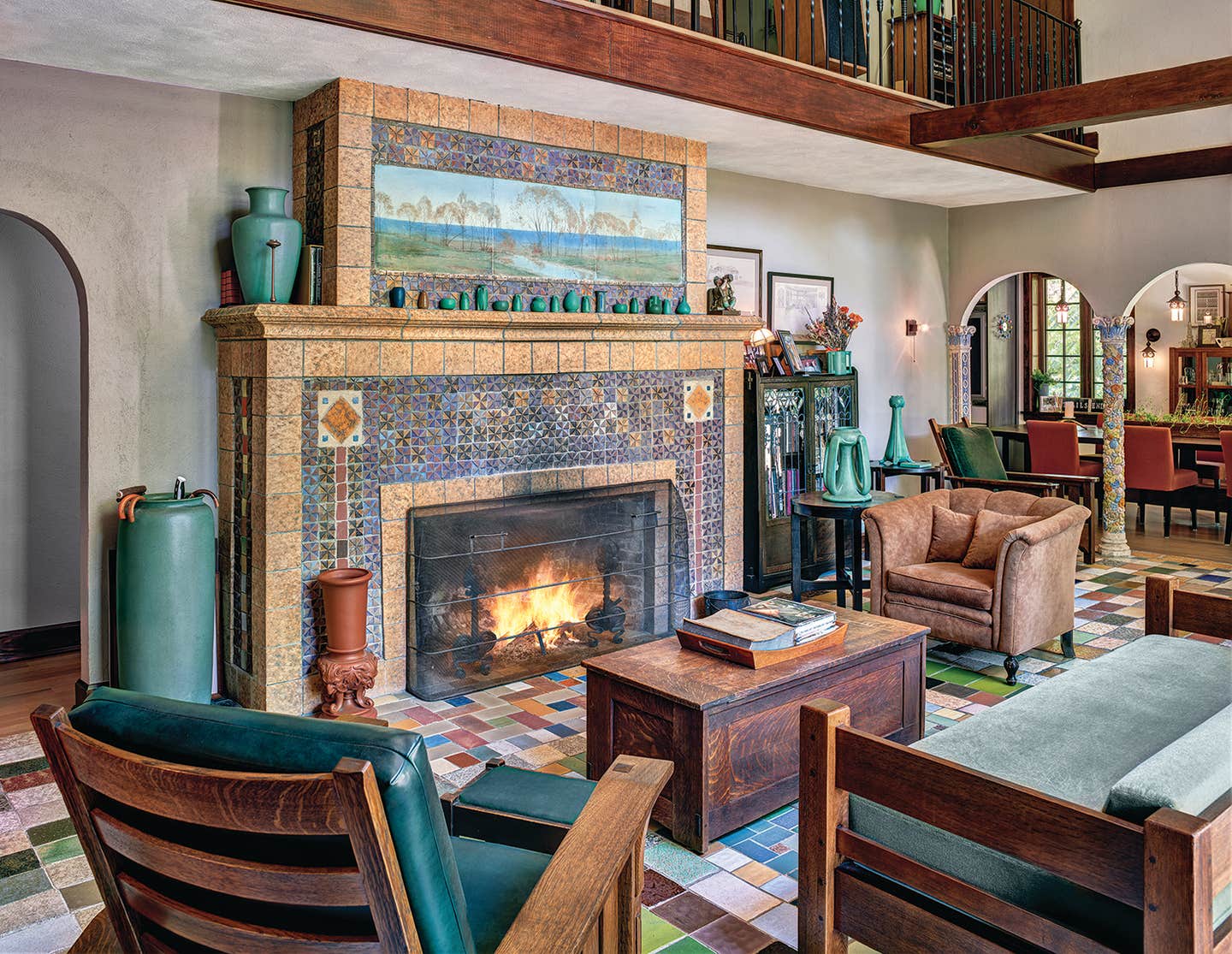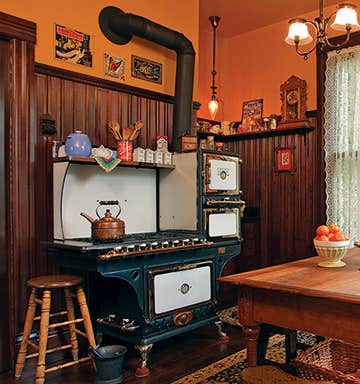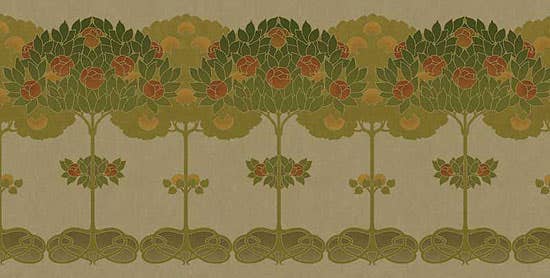An Arts & Crafts Home in Texas
A jewel of the Fairmount Historic District in Fort Worth, this Chalet-Bungalow has the quintessential bungalow-era interior with period lighting, pottery, and Stickley furniture.
By Stacy Luecker
Beamed ceilings, dark-stained woodwork—and a feeling you’ve stepped back 100 years: that’s a visitor’s first impression of this beautifully appointed bungalow, home to Michael and Stan Tucker–Mc-Dermott. Built ca. 1910, the semi-bungalow with an expansive second-storey dormer is in Fort Worth’s Fairmount National Historic District. When the couple bought the house in 2017, they’d been living a few blocks away in a late-Victorian house restored by Michael; he’d called it home for almost 25 years.
They purchased the bungalow as an investment property, but immediately fell in love with the house and decided to move in. Realizing the project involved a full restoration and some renovation, they divided responsibilities: Stan would oversee the majority of construction and scheduling, while Michael managed the design and architectural details. Every aspect of the work was researched and carefully considered. Light fixtures throughout are either antique or reproductions in period style. Wood trim has been stained Jacobean brown to match a small sample discovered under layers of paint. A faint outline on the dining-room wall indicated where a plate rail had been, and a new one was made. “We wanted the house to look as close to the period as we could determine,” Michael says.
Michael and Stan have always wanted to live in an Arts & Crafts house. The inviting, comfortable feel of the period’s furnishings, the warm palette, the clean lines are what they love most. Stan says Michael helped him develop a love for old houses later in life, though he says he’d always been attracted to the architecture of Frank Lloyd Wright. “It’s very easy to live here,” Stan agrees.
While he was researching another neighborhood house, Michael—the local historian—came across Henry Wilson’s The Wilson Bungalow, published in 1910. The popular book shows a collection of catalog-house designs, and Michael realized that No. 492 in the book had been the inspiration for their house (with a few changes made).
“With catalog houses, local builders often changed some features, and that’s what you have to look for when trying to recognize your house in one of the plan books,” Michael explains. Wilson’s designs are somewhat prevalent in the Fairmount district, but they were built with local materials—Wilson sold plans and specs only, not house kits with pre-cut parts. The discovery of the original inspiration for the house really helped with restoration. Some features that had been left out or removed could be replaced to re-create the house as it was meant to be.
In keeping with the Arts & Crafts simplicity of design and their love for handcrafted objects, the couple employed artisans to build wood windows where they were needed, to repair stained glass in cabinet doors, and to handcraft a colonnade (described by Wilson as “a buttressed and square pillared opening”) that separates the dining room from the living room. Local resources were tapped whenever as possible. Many parts and pieces came from Old Home Supply, a local architectural-salvage store. In the dining room, a cabinet that was a Christmas gift from Stan to Michael looks like it’s been there since the house was built.
Michael and Stan each own a landscape-design business. They say that their backyard, complete with a pool and garage apartment that once served as servants’ quarters, has been beautifully landscaped and is space they treasure. “The backyard is a huge favorite of mine,” Stan says. “We are outside all the time.”
The bungalow is personalized with local and state memorabilia, family items, and furnishings of the Arts & Crafts era: antique Van Briggle and Teco pottery, Gustav Stickley and Limbert furniture, a prized Tiffany Studios lamp that glows in the dining-room window. Their collection was built through years of browsing estate sales, bidding at auctions, and receiving gifts from family and friends.
Michael credits his late mother for giving him a love of antiques. “I have one of the first antique pieces of furniture my mom bought,” he said. The Eastlake-style shaving cabinet is proudly on display, holding pottery and metalwork. Upstairs, a display cabinet from Fort Worth’s Pangburn Candy Company showcases one of Stan’s collections—items in tribute to his Oklahoma roots. Every room has at least one special piece, and there are stories behind everything.
Ask Michael and Stan what advice they’d give to someone about to restore an old house, and they’ll tell you the feeling of satisfaction when the house is finished is worth every bit of effort. “We don’t want to change a thing. The house is exactly what we want, where we want to live,” Stan says.
Arts & Crafts Homes and the Revival covers both the original movement and the ongoing revival, providing insight for restoration, kitchen renovation, updates, and new construction. Find sources for kitchen and bath, carpet, fine furniture and pottery, millwork, roofing, doors and windows, flooring, hardware and lighting. The Annual Resource Guide, with enhanced editorial chapters and beautiful photography, helps Arts & Crafts aficionados find the artisans and products to help them build, renovate, and decorate their bungalow, Craftsman, Prairie, Tudor Revival, or Arts & Crafts Revival home.

